Official Warning Letter Template for Workplace Use
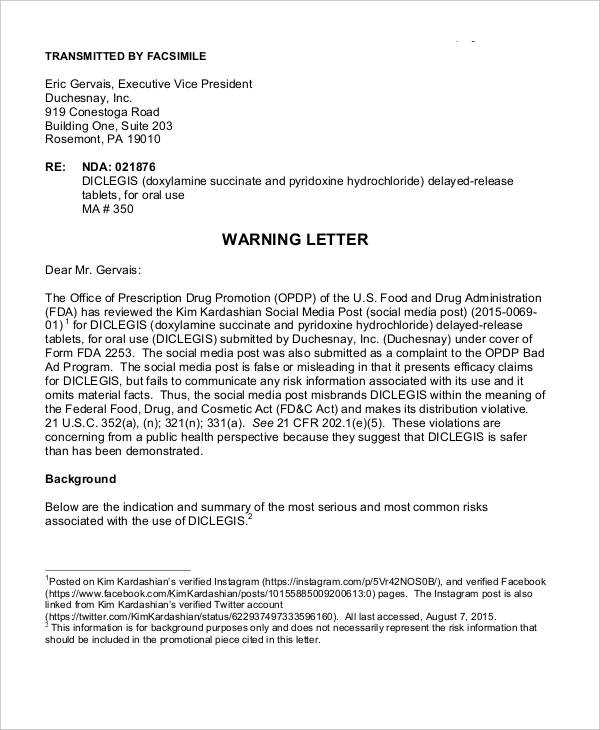
In any professional environment, clear communication plays a key role in maintaining order and setting expectations. When issues arise that require formal intervention, it’s important to have a clear structure for addressing the situation. A well-structured document helps ensure clarity and professionalism while addressing misconduct or performance problems.
Reasons for Issuing a Formal Document
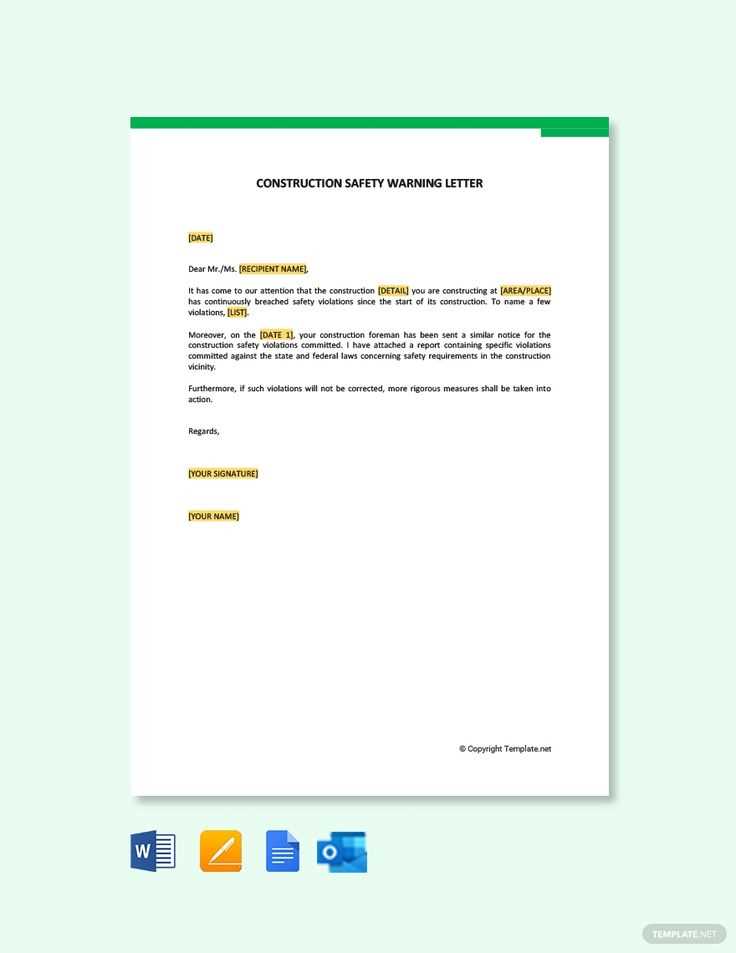
There are several instances when a formal document is necessary. These can range from unsatisfactory performance to behavioral issues or violations of company policy. It serves as an official record of the concern being raised and provides the individual with a chance to correct their actions before further disciplinary measures are taken.
Performance-Related Concerns
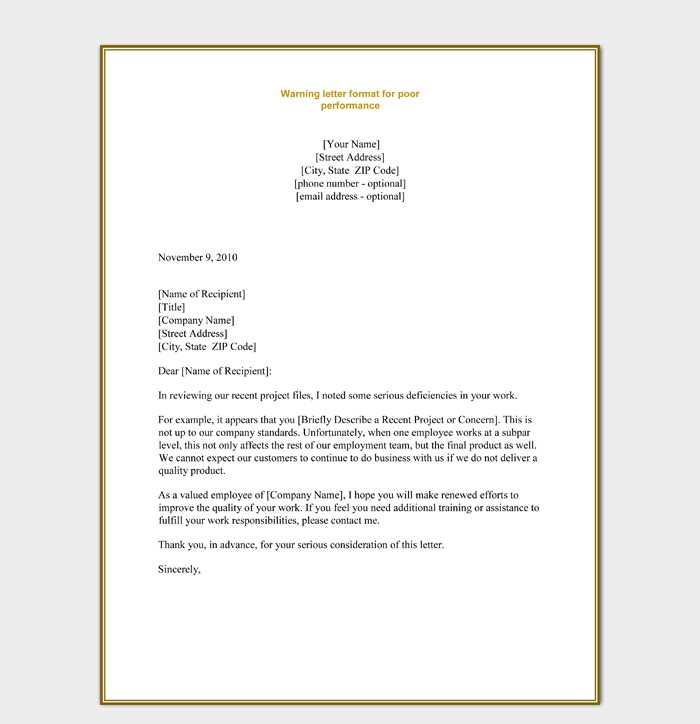
Employees failing to meet the required standards of performance can be addressed through a formal communication. This notice helps to highlight areas of improvement and sets expectations for future behavior.
Behavioral Issues in the Workplace
When an individual’s behavior negatively impacts the team or work environment, a formal notice helps maintain professionalism and addresses the need for change in behavior.
Violation of Company Policies
Violating workplace rules or regulations warrants official documentation to ensure the individual is aware of the breach and understands the consequences of continued non-compliance.
Structure and Content of the Document
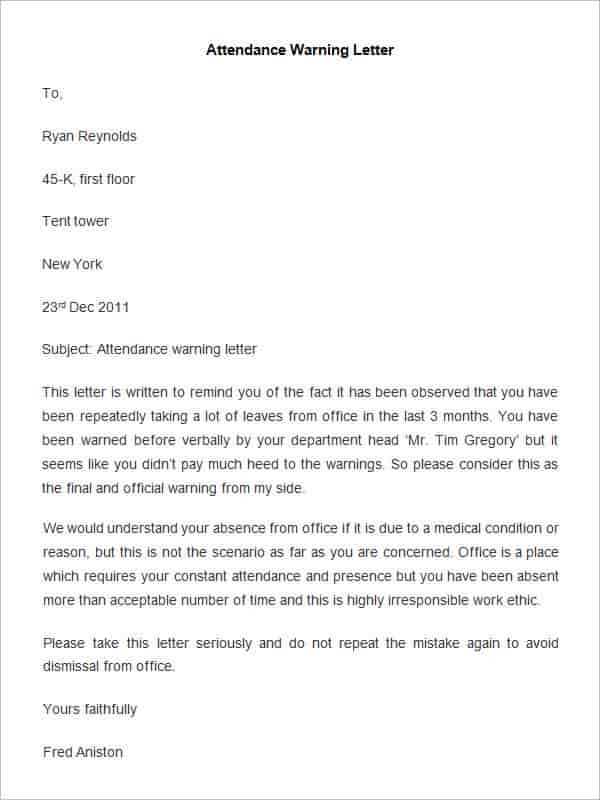
Creating a document that is clear, respectful, and direct is crucial. It should outline the problem, the expectations moving forward, and the consequences if improvement is not made. Below are key elements to include:
- Introduction: Clearly state the purpose of the document and the issue at hand.
- Details of the Issue: Provide specific examples of the behavior or performance concerns.
- Expectations: Clearly describe what actions or improvements are expected.
- Consequences: Explain the possible repercussions if no improvement is made.
- Closing: End with a reminder of the opportunity for the individual to rectify the issue.
Legal Considerations in Formal Notices
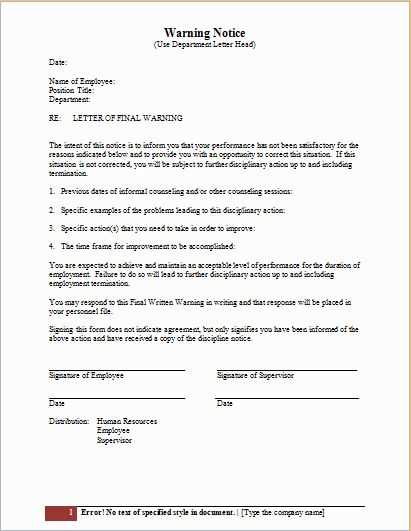
While issuing a formal document, it’s important to be mindful of the legal implications. Ensure that the content is factual, respectful, and aligned with company policies. It’s also crucial to follow any legal requirements related to employment rights and dispute resolution.
Understanding the Formal Notice Process
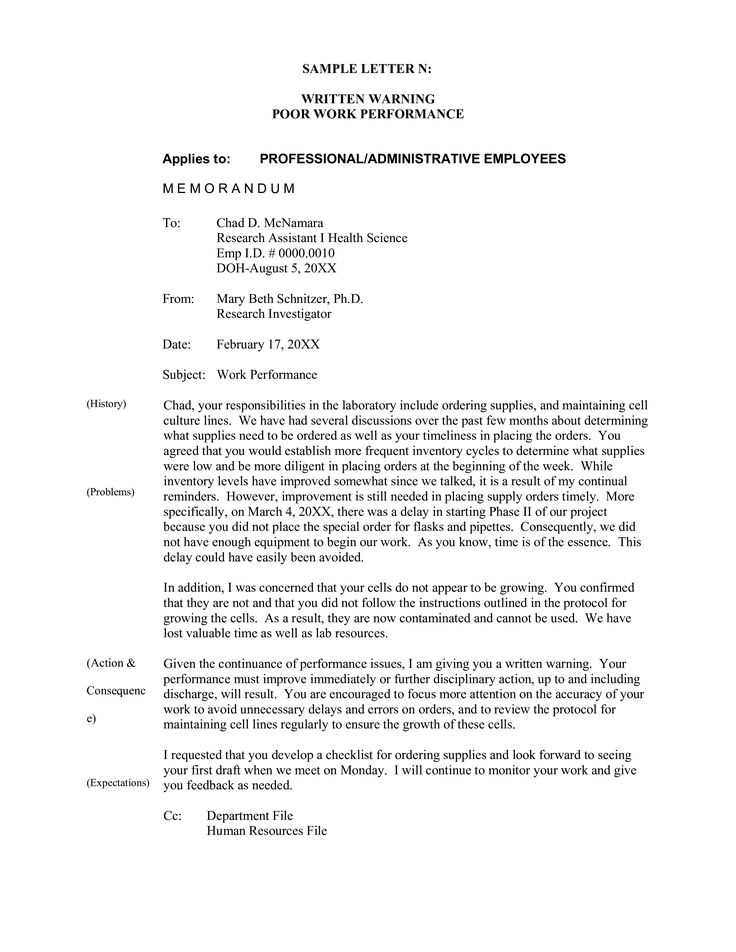
In a professional setting, it’s essential to address issues directly and effectively. Whether it’s related to performance, behavior, or adherence to company policies, communicating concerns in a structured manner ensures clarity and fairness. A formal document serves as an official acknowledgment of the situation, providing both the employer and employee with a clear understanding of expectations and next steps.
Knowing when to issue such a document is crucial. It should be done when informal conversations or guidance have not led to desired results. This step ensures that the individual is fully aware of the seriousness of the issue, while also offering them an opportunity to improve.
The key to drafting a professional document lies in understanding its core elements. These include a clear description of the issue, the expectations moving forward, and the possible outcomes if no improvement occurs. It’s essential that the document is concise yet comprehensive enough to provide clarity on the matter.
Creating a direct and transparent message is vital for ensuring the individual understands the gravity of the situation. The tone should remain professional, with a focus on resolving the issue rather than assigning blame. A well-crafted message leaves no room for misunderstanding.
Various situations might warrant the use of a formal document. These can include repeated performance deficiencies, behavioral misconduct, or violations of organizational rules. Identifying the right context for issuing such a notice ensures it’s effective and relevant to the issue at hand.
Finally, it’s important to be aware of the legal considerations when issuing this type of notice. The content must be factual and comply with employment laws to avoid potential disputes. Understanding these legal aspects helps protect both the employer and employee, ensuring that the process is fair and transparent.